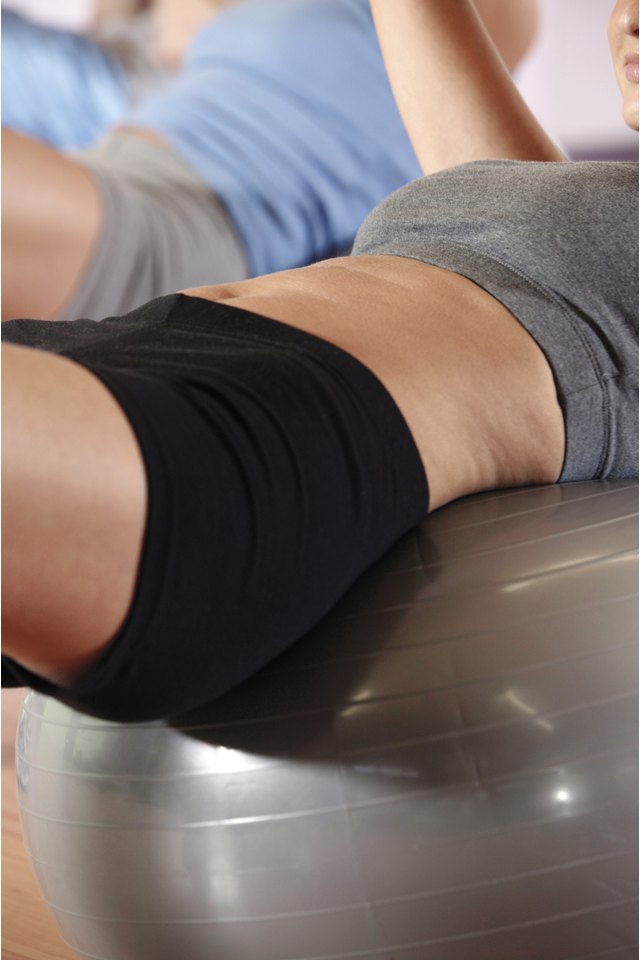How to Tighten Muscles Above the Belly Button

Not only do tight abdominals look good, but they also play an important role in your posture and ease of movement in daily activities. Toning the rectus abdominis – the top-lying abdominal muscle that extends above your belly button to the breastbone – requires a dedicated fitness program that includes targeted strength-training exercises. Along with a consistent practice of eating healthy and engaging in cardio activity, performing exercises that hit your upper abs can result in a svelte stomach.
Incorporate an abdominal workout into your fitness program at least three times per week. Maximize muscle development by focusing on your form and using your abs to execute any motion rather than momentum.
Spend five to 10 minutes at the beginning of your workout on a warm-up to raise your body temperature and get your blood and oxygen flowing to your muscles. Perform light to moderately paced cardiovascular exercise, such as jogging, brisk walking or using the elliptical trainer.
Train your upper abs with the stability ball crunch. Sit on a medium-sized stability ball and walk your feet forward until the ball is under your hips and lower back. Root your feet firmly to the floor, engage your abs, straighten your back and clasp your hands behind your head. Lift your chest toward the ceiling using a controlled movement from your core. Pause at the top for one count and then slowly return to the starting position. Complete three sets of eight to 12 repetitions.
Lie on your back on an exercise mat and lift your toes to the ceiling until your legs are perpendicular with the floor. Pull your abs in toward your spine and press your lower back into the mat. Extend your arms, pointing your fingers at your toes; this is the starting position. Use your upper abs to lift your shoulders off the ground. Reach for your toes while pressing your shoulder blades down your back; hold for one count and then return to the starting position. Complete three sets of eight to 12 repetitions.
Stretch your abdominal muscles after your training session to help them release and recover. Lie face down on a mat with your hands under your shoulders. Straighten your arms to lift your upper body into the air as you arch your back; you should feel the stretch deep in your stomach.
Tips
Perform a comprehensive abdominal workout to maximize the strength and stability in your core.
Warnings
Consult with a health care professional before starting a new fitness program. Inform your doctor if you have had any lower-back issues, which may affect your abdominal workout.
References
Writer Bio
Beth Rifkin has been writing health- and fitness-related articles since 2005. Her bylines include "Tennis Life," "Ms. Fitness," "Triathlon Magazine," "Inside Tennis" and others. She holds a Bachelor of Business Administration from Temple University.
